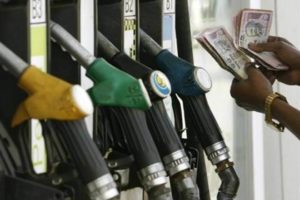With crude price low, the govt should think of moving completely to DBT for food, fertiliser and power.

Crude oil plummeted to less than US$ 30 per barrel – drop of 50% over its level in the beginning of 2020.
—————————————————————
Much before Covid 19 had assumed monstrous dimensions, the international crude oil market was already oversupplied. Then, OPEC and non-OPEC suppliers failed to reach an agreement as Russia refused to back even a moderate cut. In sync with its past behaviour under similar circumstances (1997, 2015), Saudi Arabia pumped additional supplies prompting tit-for-tat by Russia. As a result, crude oil plummeted to less than US $30 per barrel – drop of 50% over its level in the beginning of 2020.
Between March-April 2020, there was exponential growth in corona cases, forcing global lockdowns which led to destruction of oil demand on a scale never seen before. According to Rystad Energy, April saw excess supply of 27.4 million barrels per day. This forced OPEC+ countries to meet again on April 10, 2020, when they decided to cut supplies by 10 million barrels per day (mbpd) until July 2020, by 8 mbpd till December 2020 and by 6 mbpd from January 2021 to April 2022.
The agreed cut of 10 mbpd being nearly 1/3rd of demand destruction, the slide in price continues unabated with Brent crude plunging below US$ 20 per barrel. Even after the crisis is over, the supply-demand mismatch will remain with price expected to be US$ 25-30 per barrel during the second half of 2020 and thereafter marginally up to US$ 30-35 per barrel.
India depends on imports for close to 85% of its oil requirements; we can look forward to the price of crude remaining ‘low’ and ‘stable’. The government should use this opportunity to address some of the lingering ‘structural weaknesses’ in crucial sectors such as fertilisers, power, fuel, food etc. It should take note of two overarching compulsions that work at cross-purposes.
First, all four items are used by the poor. This underscores the need for making them available at price they can afford. What is an affordable price? For successive governments, the lowest possible price equals affordable price. The maximum retail price (MRP) of urea is currently Rs 5,360 per tonne. It is at the same level as it was 20 years ago. The prices of wheat and rice under National Food Security Act (NFSA) are Rs 2 per kg and Rs 3 per kg, unchanged since the Act came into force 2013. Farm power supply is charged at 50 paise per unit, and even free.
The process of supplying these items is energy-intensive. About 90% urea production in India is based on natural gas. Nearly 2/3rd of gas supply to urea plants is indigenous, whereas the balance 1/3rd is imported liquefied natural gas (LNG). The price of domestic gas is benchmarked to its price at four international locations. The global price of gas in turn, is linked to the price of crude. The price of LPG (besides petrol and diesel) is linked to their international price. The latter follow the movement in the price of crude oil.
Nearly 25,000 megawatts (MW) of power generation in India (or 7% of total installed capacity) is based on gas, mostly imported LNG. The pricing of LNG is based on a complex formula (it varies depending on the specific contract for purchase), but fundamentally, it involves linkage with crude.
The supply of food up to the last mile too is energy-intensive operation. All of transportation by road involves consumption of diesel; even movement of food by rail is fuel intensive with diesel traction accounting for 36%. The cost of supply is thus higher than selling price with the former moving in tandem with increase in price of crude oil. The difference is reimbursed as subsidy. With the increasing gap between the cost and price, the subsidy has been ballooning leading to higher fiscal deficit.
This also makes the political class wary of implementing price de-regulation and direct benefit transfer (DBT). The big drop in the price of crude has changed the scenario. It has led to corresponding reduction in price of fuels viz. natural gas, diesel, LPG, etc, and in turn, cost of supplying fertilisers, electricity, and food. For instance, the price of imported gas has dropped by about $9 per million British thermal units (mBtu) while price of domestic gas declined by US$3 per mBtu. The effective drop works out to $5 per mBtu which will reduce production cost of urea by about Rs 9,000 per tonne.
The cost of running irrigation pumps and transportation will also go down significantly if only the government does not mop up the benefit of reduction in international price by increasing central excise duty (CED) which it did during 2015. Considering that the lower crude price scenario is expected to continue for the next couple of years, the government can use this space for deregulating these sectors. With this, even under deregulated/market-based environment, the price of these items won’t spike even as the poor are given relief through DBT. Besides, the sectors will reap the full benefits of competition which will eventually to passed on to the consumers by way lowering of price.
Will Modi crack the whip?
https://www.financialexpress.com/opinion/what-india-should-do-when-oil-prices-have-crashed/1948175/
https://epaper.financialexpress.com/2660025/Delhi/May-05-2020#page/6/2